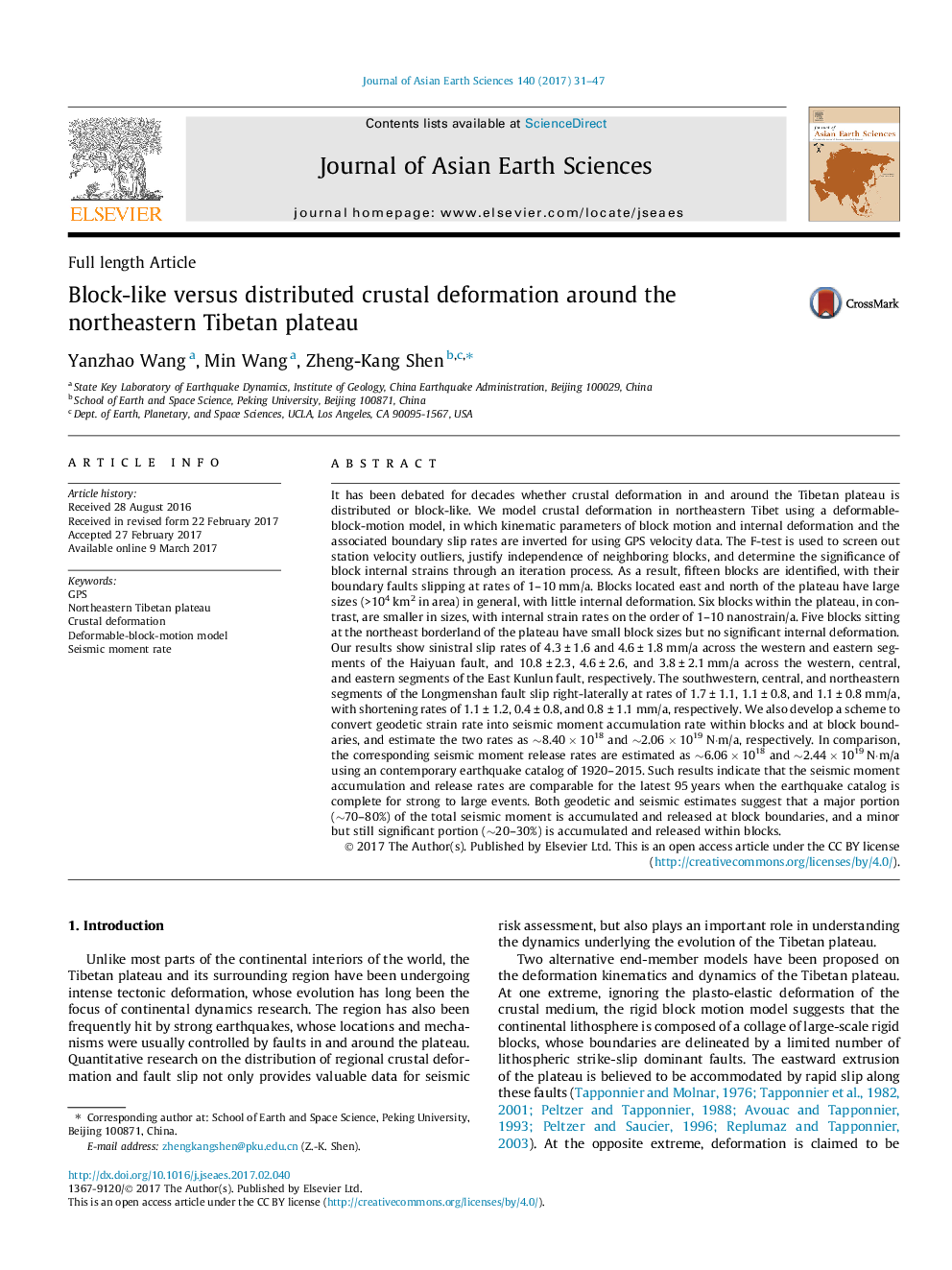| کد مقاله | کد نشریه | سال انتشار | مقاله انگلیسی | نسخه تمام متن |
|---|---|---|---|---|
| 5785899 | 1640331 | 2017 | 17 صفحه PDF | دانلود رایگان |
- A deformable-block-motion model is developed and constrained by GPS velocity data.
- Tibetan plateau blocks have smaller sizes and greater strains than outside blocks.
- New algorithm developed to decompose strike-slip and thrust regional seismic strains.
- 70-80% of seismic moment is accumulated and released at block boundaries.
- 20-30% of seismic moment is accumulated and released within blocks.
It has been debated for decades whether crustal deformation in and around the Tibetan plateau is distributed or block-like. We model crustal deformation in northeastern Tibet using a deformable-block-motion model, in which kinematic parameters of block motion and internal deformation and the associated boundary slip rates are inverted for using GPS velocity data. The F-test is used to screen out station velocity outliers, justify independence of neighboring blocks, and determine the significance of block internal strains through an iteration process. As a result, fifteen blocks are identified, with their boundary faults slipping at rates of 1-10 mm/a. Blocks located east and north of the plateau have large sizes (>104 km2 in area) in general, with little internal deformation. Six blocks within the plateau, in contrast, are smaller in sizes, with internal strain rates on the order of 1-10 nanostrain/a. Five blocks sitting at the northeast borderland of the plateau have small block sizes but no significant internal deformation. Our results show sinistral slip rates of 4.3 ± 1.6 and 4.6 ± 1.8 mm/a across the western and eastern segments of the Haiyuan fault, and 10.8 ± 2.3, 4.6 ± 2.6, and 3.8 ± 2.1 mm/a across the western, central, and eastern segments of the East Kunlun fault, respectively. The southwestern, central, and northeastern segments of the Longmenshan fault slip right-laterally at rates of 1.7 ± 1.1, 1.1 ± 0.8, and 1.1 ± 0.8 mm/a, with shortening rates of 1.1 ± 1.2, 0.4 ± 0.8, and 0.8 ± 1.1 mm/a, respectively. We also develop a scheme to convert geodetic strain rate into seismic moment accumulation rate within blocks and at block boundaries, and estimate the two rates as â¼8.40 Ã 1018 and â¼2.06 Ã 1019 N·m/a, respectively. In comparison, the corresponding seismic moment release rates are estimated as â¼6.06 Ã 1018 and â¼2.44 Ã 1019 N·m/a using an contemporary earthquake catalog of 1920-2015. Such results indicate that the seismic moment accumulation and release rates are comparable for the latest 95 years when the earthquake catalog is complete for strong to large events. Both geodetic and seismic estimates suggest that a major portion (â¼70-80%) of the total seismic moment is accumulated and released at block boundaries, and a minor but still significant portion (â¼20-30%) is accumulated and released within blocks.
345
Journal: Journal of Asian Earth Sciences - Volume 140, 1 June 2017, Pages 31-47
